
Mauro Staccioli, artista volterrano (1937-2018), ha descritto i cerchi di pietre che voleva costituisse il suo paesaggio come “concetti costruiti”. Con lui, insieme a un gruppo di bellissimi colleghi e sostenitori, dall'Italia agli Stati Uniti, è iniziato nel 1960, all'esterno del museo, il viaggio di dialogo tra natura e natura. Poi il sentiero delle ossa nel bosco, i grandi sedili in mezzo ai vigneti, le montagne degli artisti e la celebrazione della Land Art, oggi legata all'ambiente, al recupero dei saperi, alle scuole aperte. In Italia esistono mille tipologie e stili di arte paesaggistica. Tutti sono principianti per camminare e scoprire le bellezze di parchi e borghi, idee per una piacevole gita di un pomeriggio o di un fine settimana. Per ritrovare la gioia di stare fuori una volta passata l’emergenza sanitaria. Paesaggio italiano: la sedia di Chris Bangle
Mauro Staccioli, an artist from Volterra (1937-2018), described the stone circles he wanted to constitute his landscape as "constructed concepts." With him, along with a group of beautiful colleagues and supporters from Italy to the United States, the journey of dialogue between nature and nature began in 1960, outside the museum. Then the bones path in the woods, the big seats in the middle of the vineyards, the artists' mountains and the celebration of Land Art, now linked to the environment, to the recovery of knowledge, to open schools. There are a thousand types and styles of landscape art in Italy. All are beginners to walking and discovering the beauty of parks and villages, ideas for a pleasant afternoon or weekend trip. To rediscover the joy of being outside once the health emergency has passed. Italian landscape: the chair of Chris Bangle
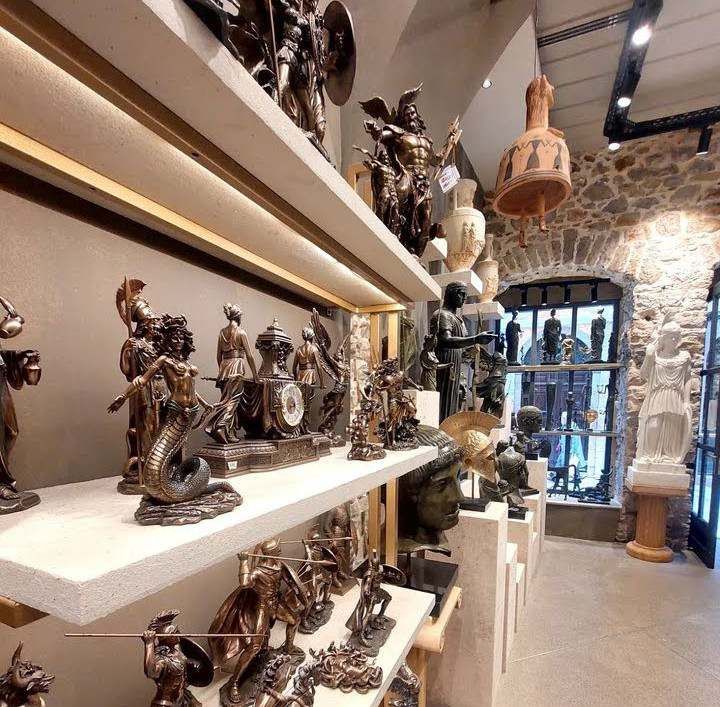
Ci sono più di 90 grandi banche, principalmente in Piemonte, che riempiono alcuni dei luoghi più belli del paese. Il primo, tutto rosso, è stato realizzato nel 2010, sulla collina di Borgata a Clavesana, nel cuneese, da Chris Bangle, architetto americano che oggi vive e lavora qui. L'idea, tra Land Art e mercato territoriale, è che queste grandi strutture, conosciute e senza numeri, invitino a salire, sedersi e tornare bambini, godere di questi luoghi familiari con nuove idee. Il loro numero più alto è in Alta Langa, dove sono previste nuove installazioni per il 2021, ma si trovano in Trentino, nel cuore della Toscana (e, all'estero, in Scozia).
There are more than 90 large banks, mainly in Piedmont, that fill some of the most beautiful places in the country. The first, all red, was built in 2010, on the hill of Borgata in Clavesana, Cuneo, by Chris Bangle, an American architect who now lives and works here. The idea, between Land Art and territorial market, is that these large structures, known and without numbers, invite people to climb up, sit down and become children again, enjoy these familiar places with new ideas. Their highest number is in Alta Langa, where new installations are planned for 2021, but they can be found in Trentino, in the heart of Tuscany (and, abroad, in Scotland)

Le sedi principali sono sostenute da donazioni private. Il processo di progettazione e costruzione continua affinché Chris Bangle, purché l'installazione sia in un punto panoramico, accessibile a tutti, sia un'esperienza collettiva e un luogo di incontro. In particolare, in ogni luogo, il cartello della panchina indica dove si trova il visitatore, indicando l'inizio del progetto di scala, di sostegno e di diffusione della cultura locale, delle conoscenze tecniche e delle eccellenze gastronomiche ed enologiche. "Un segno di buon potere", spiega Bangle, che oggi sogna di vederne uno in qualsiasi problema o in qualsiasi brutto posto del mondo. Una mappa delle panchine italiane, con le coordinate regionali, è disponibile su big bench community project.org. Paesaggio piemontese: Oasi Zegna
The main venues are supported by private donations. The design and construction process continues so that Chris Bangle as long as the installation is in a scenic spot, accessible to all, is a collective experience and a meeting place. Specifically, at each location, the bench sign indicates where the visitor is, signifying the beginning of the project of scale, support and dissemination of local culture, technical knowledge and culinary and wine excellence. "A sign of good power," explains Bangle, who now dreams of seeing one in any problem or bad place in the world. A map of Italian benches, with regional coordinates, is available at big bench community project.org. Piedmont landscape: Oasi Zegna
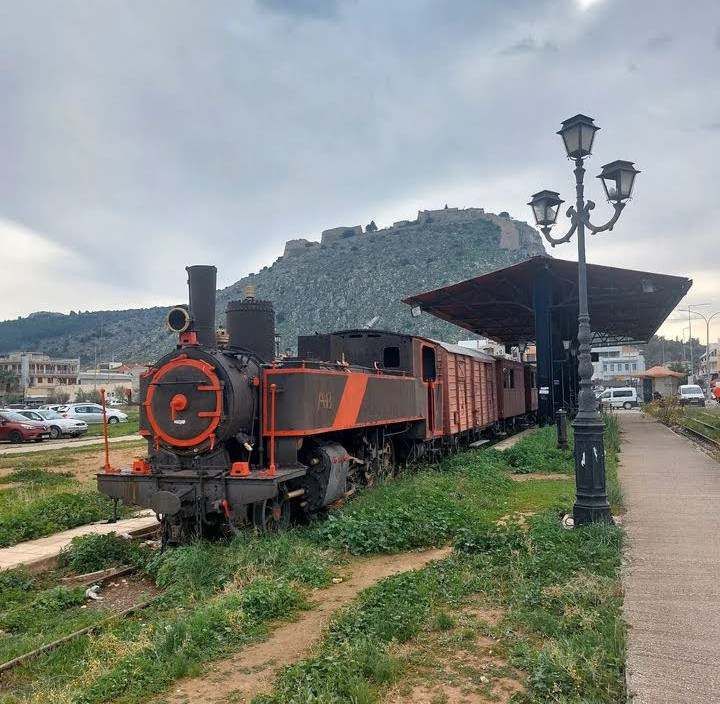
A Trivero, all'ingresso dell'Oasi Zegna, parco naturale delle Alpi biellesi, dal tetto del lanificio sventolano 126 bandiere blu. È stata un'installazione del francese Daniel Buren a segnare l'inizio di All'aperto nel 2007. Il progetto di arte pubblica promosso dalla Fondazione Zegna vede attualmente sette contributi permanenti di creatori di fama internazionale, invitati a confrontarsi con la natura, protagonista delle loro storie. Dopo Buren, è stata la volta di Alberto Garutti, con sedie dedicate ai cani di Trivero e ai loro padroni, in città. Si tratta dei Telepati o "teste pensanti" di Stefano Arienti, dipinti su rocce fluviali; l'orologio senza lancette, a vapore, del romano Signer e del milanese Pleasure Garden Marcello Maloberti, è illuminato da una luna al neon. Si esce dalla città, si segue per un chilometro a piedi il bellissimo sentiero Zegna e ci si ritrova nella Valle dei Rododendri, dove il padiglione in vetro e acciaio di Dan Graham cattura tutti i colori del paesaggio in un gioco meditativo. Sito d'arte di Rossini
In Trivero, at the entrance to Oasi Zegna, a nature park in the Biella Alps, 126 blue flags fly from the roof of the wool mill. It was an installation by French artist Daniel Buren that marked the beginning of All'aperto in 2007. The public art project promoted by the Zegna Foundation currently sees seven permanent contributions from internationally renowned creators, invited to engage with nature, the protagonist of their stories. After Buren, it was the turn of Alberto Garutti, with chairs dedicated to Trivero's dogs and their owners, in the city. These are Stefano Arienti's Telepaths or "thinking heads," painted on river rocks; the handless, steam-powered clock by Rome's Signer and Milan's Pleasure Garden Marcello Maloberti is illuminated by a neon moon. Walk out of town, follow the beautiful Zegna trail for a kilometer and find yourself in the Valley of the Rhododendrons, where Dan Graham's glass-and-steel pavilion captures all the colors of the landscape in a meditative play. Rossini Art Site
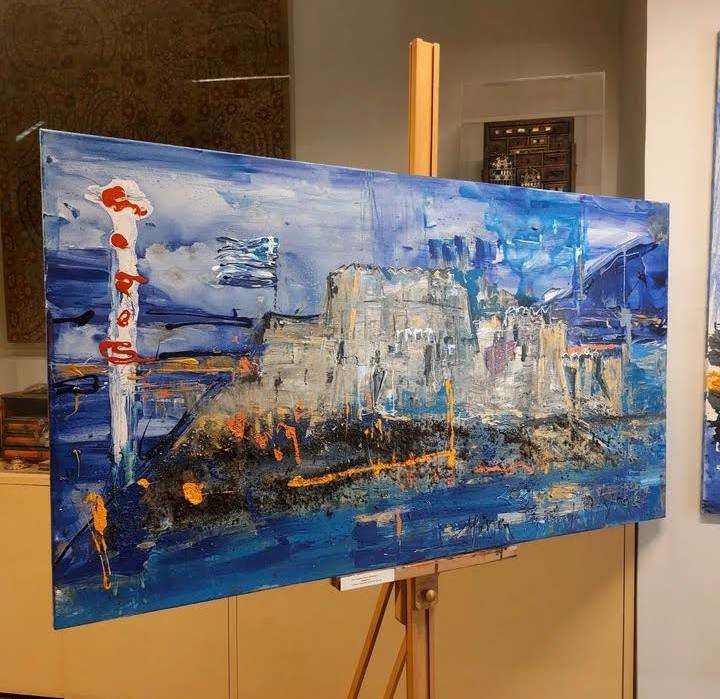
A una ventina di chilometri da Monza, sede artistica di Rossini, e di Briosco, si trova la storia dell'aria moderna italiana. Racchiude il sogno dell'imprenditore-manager Alberto Rossini che, dagli anni '50 agli anni '50, raccoglie nel suo giardino il lavoro dei primi pionieri che andarono oltre il figurativo. Osservatori come Mario Negri, Lorenzo Pepe, Andrea Cascella, Giò Pomodoro, star straniere come Jean Tinguely e Hidetoshi Nagasawa. Dalle geometrie dell'astrazione e dalla provocazione del Nuovo Realismo, tutto nei dieci ettari di verde sulle colline della Brianza, nel parco della Valle del Lambro, dialoga con il paesaggio. L'ingresso, progettato dall'architetto newyorkese James Wines, raffigura un giardino dominato dall'erba. Il sito d'arte è anche uno spazio per eventi, residenze d'artista e programmi educativi. I figli di Rossini, morti nel 2015, hanno continuato la sua opera. L'ultima acquisizione? Un progetto di fuga di Chiara Mu, un'installazione per giocare con il salice e l'erba. Arte Sella e RespirArt, il parco dell'arte del Trentino
About 20 kilometers from Monza, Rossini's artistic home, and Briosco, lies the history of modern Italian air. It encapsulates the dream of entrepreneur-manager Alberto Rossini, who, from the 1950s to the 1950s, gathered in his garden the work of early pioneers who went beyond the figurative. Observers like Mario Negri, Lorenzo Pepe, Andrea Cascella, Giò Pomodoro, foreign stars like Jean Tinguely and Hidetoshi Nagasawa. From the geometries of abstraction and the provocation of New Realism, everything in the ten hectares of green on the hills of Brianza, in the park of the Lambro Valley, dialogues with the landscape. The entrance, designed by New York architect James Wines, depicts a garden dominated by grass. The art site is also a space for events, artist residencies and educational programs. Rossini's children, who died in 2015, have continued his work. The latest acquisition? An escape project by Chiara Mu, an installation to play with willow and grass. Arte Sella and RespirArt, the art park of Trentino.

L'opera di RespirArt appare come un miraggio in mezzo al pascolo, all'ombra delle guglie dolomitiche del Latemar, uno dei parchi d'arte più alti al mondo, che si estende fino a Pampeago, e nel territorio delle province di Trento e Bolzano , e a. un anello di tre chilometri fino a duemila metri, tra rifugi
RespirArt's work appears like a mirage in the midst of the pasture, in the shadow of the Dolomite spires of Latemar, one of the world's highest art parks, which extends to Pampeago, and in the territory of the provinces of Trento and Bolzano , and a. a three-kilometer loop up to two thousand meters, among mountain huts
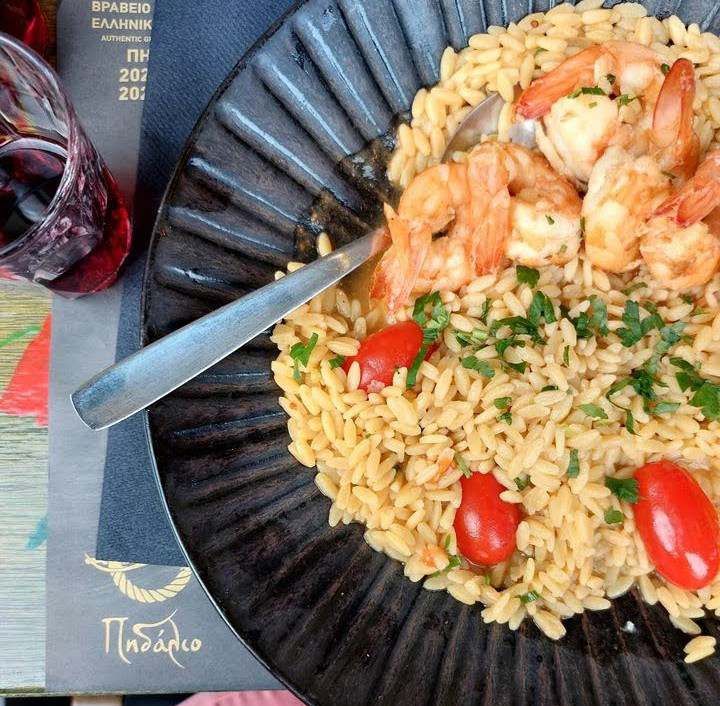
Le 60 opere di Arte Sella sparse dal 1968 nei boschi della Valsugana sono una mostra storica dell'Arte. E sono circa centinaia di migliaia i visitatori che ogni anno si aggirano tra la Cattedrale Vegetale di Giuliano Mauri e il Terzo Paradiso. La Trincea della Pace di Michelangelo Pistoletto, un omaggio alle ferite della Grande Guerra aperte in queste zone. Due anni fa, tre architetti, l'italiano Michele De Lucchi e il giapponese Atsushi Kitagawara, autore del padiglione del Giappone a Expo 2015, e Kengo Kuma, progettista dello stadio per i Giochi Olimpici di Tokyo 2020 (rinviati al 2021), Arte Sella ha aperto. Architettura. Nuove opere si possono ammirare allo Sky Museum nel centro di Borgo Valsugana.
The 60 Arte Sella works scattered in the woods of Valsugana since 1968 are a historical art exhibit. And there are about hundreds of thousands of visitors who wander each year between Giuliano Mauri's Vegetable Cathedral and Michelangelo Pistoletto's Third Paradise. Michelangelo Pistoletto's Peace Trench, a tribute to the open wounds of the Great War in these areas. Two years ago, three architects, Italy's Michele De Lucchi and Japan's Atsushi Kitagawara, author of Japan's pavilion at Expo 2015, and Kengo Kuma, designer of the stadium for the Tokyo 2020 Olympic Games (postponed to 2021), Arte Sella opened. Architecture. New works can be seen at the Sky Museum in downtown Borgo Valsugana.

Bosco Arte Stenico, vicino all'omonimo paese nel nord del Lago di Garda, cresce e cambia nel tempo: neve e vento sostengono l'opera, modellando il paesaggio e il loro colore. "L'installazione utilizza materiali raccolti dall'artista nel bosco: foglie, pietre e piante aromatiche, dal tiglio al pino nero, dal carpino al larice", spiega Maurizio Corradi, è l'anima del progetto, che nasce nel 2012. Artisti, il sito, che conta ormai un centinaio di opere, realizza ogni anno un'opera legata al tema: quella del 2020 è Metamorfosi. Un inno alla cultura contadina, Cataste &;Canzei vola al centro di Mezzano, tra i Borghi più belli d'Italia. Qui il lungo inverno delle Dolomiti porta gli abitanti del paese a tenere davanti casa una catasta di legna spettacolare e ordinata: i canzini. Gli alberi sono definiti da artisti che, sfruttando le tipologie del grano e della corteccia in tempi diversi, danno vita a giocose installazioni. Il più imponente è Aluvion di Marco Baj, e dal 2012 un grande muro difensivo, per commemorare il disastro del 1966. Val d'Ert, una valle naturale dell'Alto Adige
Bosco Arte Stenico, near the village of the same name in northern Lake Garda, grows and changes over time: snow and wind support the work, shaping the landscape and their color. "The installation uses materials collected by the artist in the forest: leaves, stones and aromatic plants, from linden to black pine, from hornbeam to larch," explains Maurizio Corradi, is the soul of the project, which was born in 2012. Artists, the site, which now has about a hundred works, creates a work related to the theme each year: the one for 2020 is Metamorphosis. An ode to peasant culture, Cataste &;Canzei flies to the center of Mezzano, among Italy's Most Beautiful Villages. Here the long winter in the Dolomites leads villagers to keep a spectacular and orderly woodpile in front of their homes: the canzei. The trees are defined by artists who, exploiting the types of grain and bark at different times, create playful installations. The most impressive is Marco Baj's Aluvion, and since 2012 a large defensive wall, commemorating the 1966 disaster. Val d'Ert, a natural valley in South Tyrol
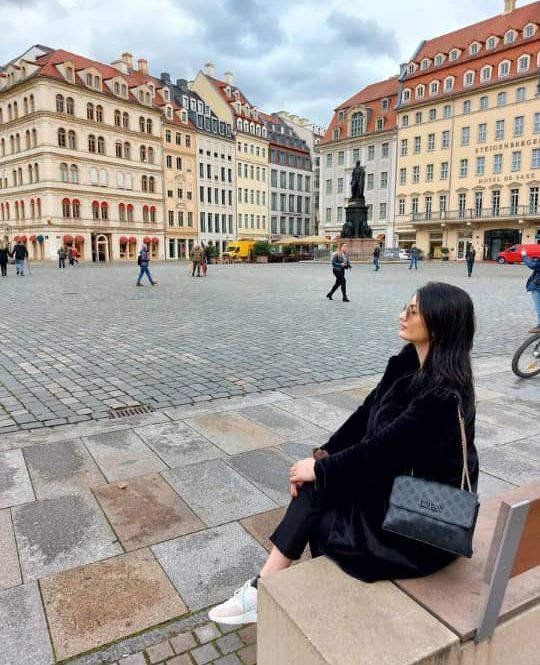
La pubblicazione del prossimo progetto Smach avverrà nell'estate del 2021, in una data non ancora precisata, l'air show del progetto in situ, il meglio del concorso internazionale che ci invita nella regione zona San. Martino in Badia e San Vigilio de Marebbe. Nel frattempo visitate la Val d'Ert, un parco d'arte che espone una selezione di opere delle precedenti edizioni, ora permanente e aperto ai visitatori tutto l'anno. Il percorso parte dal Museo Ladin Ciastel de Tor.
The publication of the next Smach project will take place in the summer of 2021, at an as yet unspecified date, the air show of the project in situ, the best of the international competition inviting us to the region area San. Martino in Badia and San Vigilio de Marebbe. In the meantime, visit Val d'Ert, an art park displaying a selection of works from previous editions, now permanent and open to visitors year-round. The route starts at the Museo Ladin Ciastel de Tor.

Ci vogliono 40 minuti o, se lo desideri, un viaggio di andata e ritorno più lungo, fino a due ore e mezza. Da giugno a settembre vengono organizzati film, spettacoli teatrali e cinema sotto le stelle. La slitta gigante del tedesco Hans Martin Lützenburg è alta cinque metri; la pietra dell'italiano Stefano Cagol è in fibra di vetro; In Movement of the Sky, di Kei Nakamura, questi oggetti metallici creano un riflesso di luce che si estende nella natura circostante. Come nel caleidoscopio L'opera di Mauro Staccioli a Volterra e la collezione Gori a Villa Celle, in Toscana.
L'ingresso a Villa Celle, a 40 chilometri da Firenze, alle pendici delle colline pistoiesi, promette un viaggio unico. Dietro l'ingresso della residenza del XVII secolo - voluta dal cardinale Carlo Agostino Fabroni - si estende un grande parco:
It takes 40 minutes or, if you wish, a longer round trip of up to two and a half hours. From June to September, films, theater performances and cinema under the stars are organized. German Hans Martin Lützenburg's giant sled is five meters high; Italian Stefano Cagol's stone is made of fiberglass; In Movement of the Sky, by Kei Nakamura, these metal objects create a reflection of light that extends into the surrounding nature. As in Mauro Staccioli's Kaleidoscope The Work in Volterra and the Gori Collection in Villa Celle, Tuscany.
The entrance to Villa Celle, 40 kilometers from Florence on the slopes of the Pistoia hills, promises a unique journey. Behind the entrance to the 17th-century residence - commissioned by Cardinal Carlo Agostino Fabroni - stretches a large park:

20 ettari con alberi secolari, boschetti e angoli tranquilli progettati secondo questo modello romantico, che ancora alla fine del 19esimo secolo, chiedi a cinque una natura di riflettere sulla sua malinconica bellezza. Si tratta di un esempio di un'imponente collezione di installazioni e sculture, tra le più importanti nel mondo dell'arte ambientale: la collezione Gori. Si tratta di creature giganti in servizio da oltre tre decenni, l'ultima delle quali è stata rilasciata due anni fa. Tutti “toccati con mano”, ha detto più volte Giuliano Gori, ideatore del progetto.Gori, che ha aperto la società economica nel XII. Giugno 1982. Da allora, da maggio a settembre, invita a visitare la strada che comprende, oltre alla fattoria e all'azienda agricola, anche la voliera del poeta-architetto Bartolomeo Sestini che realizzò la casa da tè, i monumenti egizi, le scogliere e il rocce. cascate, laghi.
20 hectares with ancient trees, groves and quiet corners designed according to this romantic model, which still at the end of the 19th century, ask five a nature to reflect on its melancholic beauty. This is an example of an impressive collection of installations and sculptures, among the most important in the world of environmental art: the Gori Collection. These are giant creatures in service for more than three decades, the last of which was released two years ago. All "touched by hand," said Giuliano Gori, creator of the project several times.Gori, who opened the economic society in XII. June 1982. Since then, from May to September, he has been inviting people to visit the road, which includes, in addition to the farm and the farm, the aviary of poet-architect Bartolomeo Sestini, who made the teahouse, Egyptian monuments, cliffs and rocks. waterfalls, lakes.

Nella cappella della villa, con le sue porte di metallo, l'opera di Daniele Lombardi, e le note scolpite dell'ultimo violino della sua composizione Divina.com. Gori insiste: "Queste opere devono essere pensate per il luogo e realizzate sul posto". Robert Morris ha creato una Venere di tre metri, una dea della fertilità. Loris Cecchini ha aggiunto una seconda pelle al leccio di quercia secolare, una rete di finiture cromate che riflette la luce in verde. Luigi Mainolfi, con i tifosi, ha sistemato un sedile sul tetto dell'auto in ricordo della moglie di Gori, Pina, che amava guardare il tramonto dal terrazzo. In una delle parti più vicine del parco, tra gli ulivi, l'artista Tur
In the chapel of the villa, with its metal doors, the work of Daniele Lombardi, and the carved notes of the last violin of his composition Divina.com. Gori insists, "These works have to be designed for the place and made on site." Robert Morris created a ten-foot Venus, a fertility goddess. Loris Cecchini added a second skin to the centuries-old oak tree, a network of chrome trim that reflects light in green. Luigi Mainolfi, with fans, placed a seat on the roof of the car in memory of Gori's wife, Pina, who loved to watch the sunset from the terrace. In one of the closest parts of the park, among the olive trees, artist Tur
Great post
Curated by @ultravioletmag